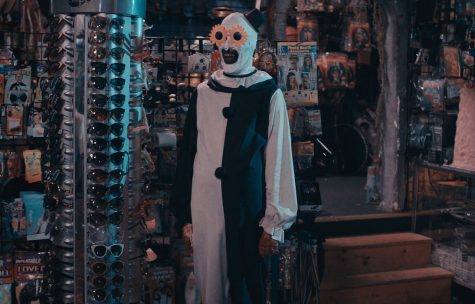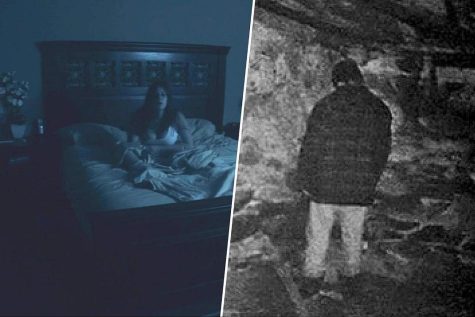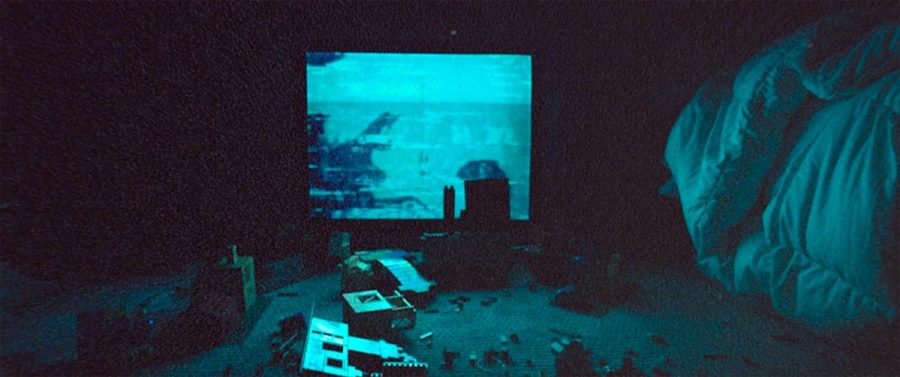Low-Budget Indie Films Could be the Future of the Horror Genre
Films like ‘Skinamarink’ and ‘Terrifier 2’ are setting the standard for horror films in their own way.
The impact of “Skinamarink” and “Terrifier 2” at the box office is certainly notable for future horror cinema.
“Terrifer 2” released in October 2022 and on a $250,000 budget, has grossed over $14.8 million at the box office so far, according to Box Office Mojo. “Skinamarink” has been even more so success in a shorter period of time with less exposure, grossing over $2 million at the box office on a $15,000 budget ever since its limited theatrical release in January 2023, according to Box Office Mojo.
Those are big numbers for the indie movie scene, regardless of the genre, as horror is one of the more subjective and needs originality and creativity to the nth degree. But that can’t be done without being given the chance to experiment, as hardcore fans of both films show their support in theatres, even with both movies having their own controversies.
*No Spoilers included in this article. Just giving a warning or suggestions as to the audience that is meant for each film with very little or minor detail to the synopsis.
Apparently, a few viewers watching “Terrifier 2” thought it was so grotesque and over the top, in its violence that some puked or even passed out in theatres to the point it was released with limited screenings or was almost banned (or given a warning) in some countries overseas (like Australia).
“Skinamarink” is controversial, in that many have either had positive only or negative only thoughts about the film to the point where it is considered an extreme example of the phrase “love it or hate it”.
It is considered a horror, but that could be seen as either a good or bad thing due to the genre. Its critics don’t fit it in as a traditional horror or even think it is worthy of its praise as an attempt due to how ambiguous and lack of clear visuals on the characters there is throughout the movie.
Both movies can be viewed as polar opposites when it comes to the horror genre.
“Skinamarink” is as slow of a burn of a movie as you can get, with odd camera angles and little optics of what is really happening. I don’t think I ever recall seeing a film where the main characters never show their face. We see some aspects of the house when strange things occur through the eyes of Kevin and Kaylee at times, as they are scared children wandering through their house at night after an “accident”.
“Terrifer 2” shows you all that it has to offer and then some, as a classic and gruesome slasher that goes to the extreme to no end it seems. The killings continue as you should watch the first film before this one, as the sequel shows Art the Clown terrorize Miles County and a new group of characters on Halloween night right after the events of the first movie.

The sequel to 2016’s “Terrifier” was written, directed, edited, and produced by Damien Leone.
Six years later, the second film of the “Terrifier” franchise is the third movie to include the beloved or frightful (depending on who you ask) character Art the Clown.
Art first debuted on the big screen in the 2013 horror flick, “All Hallows’ Eve,” which was also Damien Leone’s directorial debut in a feature film.
The clown first became a character in a short called “The 9th Circle” in 2008, which is 11 minutes long. Three years later, Art was featured in a 20-minute short called “Terrifier,” which became a part of the anthology film two years after its release in 2011. After the producer for “All Hallows’ Eve,” Jessie Baget, watched the short, he contacted Leone to possibly make another short to add after including the other two shorts in All Hallows’ Eve. At 83 minutes, Art made his mark in the hypothetical horror “cinematic” universe that had fans wanting more which eventually led to the 138-minute “Terrifier 2.”
That isn’t the only film that got its origins from a Youtube short video or internet culture itself.
The Canadian writer, editor, and director of Skinamarink, Kyle Edward Ball, has a YouTube Channel called Bitesized Nightmares. This was ultimately the inspiration for making the feature-length film. Ball first posted videos five years ago which led to the short video Heck. At about 28 minutes long, it was posted in 2021 and is essentially a precursor or at least somewhat correlated to “Skinamarink,” which totals 100 minutes long.
The first ever video he posted in 2017, nightmare 1 (contains strobing), kickstarted his series of turning comments of real-life nightmares into video shorts that others have had, or at least conceptually. This helped him build a community on Reddit and YouTube as a horror-based creator.
While the sleeper film got buzz at Fantasia Fest in 2022 after it was accepted, the trailer went viral on Reddit, as horror fans were hyping up the crowdfunded movie that was all shot at his childhood home with the toys he used to play with as a kid. Ball had the concept for the movie, so what he needed was someone to capture the shots he needed to portray the story effectively.
Jamie McRae was an experimental filmmaker at the time but became the director of cinematography for this film and offers a style that is intentionally grainy to reminisce back to the 90s, for some to relive their “true nightmares” as kids.
Ball’s movie at the International Film Festival in Montreal, Canada over the summer of last year had glowing reviews from audiences over social media (like Twitter). However, it had yet to be released for the mainstream and the critics watching it already had viewed other indie films that were, most likely, on the abstract side. Ultimately, someone illegally copied it on a digital screener (due to a glitch) and leaked the entire thing on Reddit. This led to other people pirating and watching it months before it could be available publicly, causing it to go viral but perhaps in a way Ball didn’t want or expect it to be.
By November, there were already tons of TikToks about it, calling it “the scariest thing they have seen” or saying “this is the most overhyped horror movie I have ever seen”. But some were skeptical and decided to watch and review the film themselves, already seeing it with high expectations or lack of context. Once the leak was accessible to the masses on Reddit or some other site, there were plenty of people criticizing the movie, as it has a staggering low “5.1” rating on IMBD. This is lower than even a tougher-to-watch film like “Terrifier 2,” which has a 6.2 rating (according to IMDB).
I usually don’t take into account the ratings of a film, but overall, I think “Skinamarink” was just not meant for the average viewer to judge for that harsh of a grade. For the critics, it might have been a tough watch, but just for a different reason in comparison to “Terrifier 2,” which most people going in know what they are in for.
IFC Midnight, the horror genre version of IFC (an American Film production/distribution company based in New York) along with the horror movie streaming platform Shudder picked up the film and had to speed up the process for it to be shared either publicly in theatres in a limited capacity or via Shudder due to the leak. So while it did gain traction and build a cult following over social media, it might have gained part of an audience that normally wouldn’t want to watch a movie this experimental.
But despite a change in internet culture from back then to now, sometimes history sort of repeats itself in a strange way.

Film franchises like “Paranormal Activity” and “The Blair Witch Project” made an entirely new subgenre of horror movies with found footage flicks.
The first “Paranormal Activity” film had a $230,000 total budget (production and post-production) and grossed $194.2 million at the box office. This booming success led to a plethora of sequels, as it is the most profitable horror franchise of all time, according to Slash Films.
The original “Blair Witch Project” had a $200,000 budget and grossed $248 million at the box office, as it is considered the “most profitable, widely seen low-budget film of all time,” according to Collider.
Despite both being lower-budget indie movies, the online virality throughout social media helped each movie gain traction and notoriety, whether it was good or bad publicity for the film itself.
Still, the widespread growth of films like these could be the spark to the horror genre that reminisces to roots of the classic found footage films, like 1999’s “The Blair Witch Project” and 2007’s “Paranormal Activity,” to make a comeback when many thought this subgenre was dead in the water.
Of course, those movies aren’t the ones that first used found footage as a way to depict horror but I would say those two are the most notorious for bringing it to the big screen for the genre. There were many ripoffs following the success of both films, so the subgenre of “horror found footage” has been seen as overused at this point where it is parodied or used just sparingly.
With the subjectivity that comes to the horror genre, while each film has it’s own large enough fanbases praising each film for its own reasons, I would say both movies are meant for two different audiences.
Genuine fans of horror might like or dislike both, but I would say if you can’t handle heavy violence or gore, stay away from “Terrifer 2”. But if you want something more out of your horror and less interpretative or an experimentative style of film, maybe “Skinamarink” might bore you.
As someone who watched both, if you do enjoy most horror movies, I would give both a shot at the very least, as I would consider them my favorite horror films from last year.
*“Terrifier 2” is on the Screambox streaming service and “Skinamarink” is available for streaming on Shudder. Both are available to rent/buy on platforms like Amazon, Youtube, Vudu, Roku, and Apple TV.

Andrew Kim is a senior majoring in Journalism. Transferring and switching majors a few years ago was a big risk but it has been well worth it so far. Andrew...












